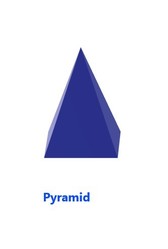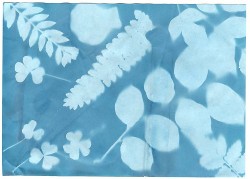S.T.E.M. study often requires being able to visualize things that are not obvious. Posters can help, but posters fall short if three-dimensional views are needed. Fortunately, three-dimensional models are available. Using a three-dimensional model can put things in perspective much better than two-dimensional representations can.
In some cases, three-dimensional models are inadequate. In those cases, showing how things change over time is very important in understanding the process being studied. Working models can help when a four-dimensional representation, the fourth dimension being time, is paramount in understanding a process.















 UAPs, Formerly UFOs, If They Are Real How Can We Explain Their Arrival to Earth?8 days ago
UAPs, Formerly UFOs, If They Are Real How Can We Explain Their Arrival to Earth?8 days ago
 Polar Coordinate System10 days ago
Polar Coordinate System10 days ago
 Aurora Can Disrupt Electrical Devices And Even the Grid?11 days ago
Aurora Can Disrupt Electrical Devices And Even the Grid?11 days ago
 Overcoming Difficulties Encountered with Mathematics12 days ago
Overcoming Difficulties Encountered with Mathematics12 days ago



Comments
Parallel universes would not imply existence being duplicated. It is something thought possible to explain, for example, dark energy, where another gravitation source could be the cause of unexplainable acceleration. Certainly it is not proven, just thought to be a missing part of our understanding.
Our universe if four dimensional, but some theoretician in physics refer to dimensions in a way as to include other properties, not properties we consider dimensions. The fourth dimension is time.
Interesting conversation on multidimensions and parallel universe. We are so used to 3 dimension that we fail to comprehend the fourth and higher. Parallel universe does not exist because we cannot be present in 2 places at the same time and there is no need of replicating us elsewhere. Science does not justify it too. One self of us is more than enough, why do we want another parallel existence. Of course, there is no limits for imagination, so we can create a parallel universe. In any case, cosmos is a complete mystery, unfolding it will be like a detective delayering the crime scenes. In our capacity, it is not possible to understand the universe, so we compartmentalize the unknown. Coming back to models - it is so easy to conceptualize and understand with the help of them that complex issues need to be addressed this way.
Einstein assigned four dimensions, which can best be understood at what is necessary to locate something. ly One can cross a street, but if the time of being in the street coincides with a vehicle about to be in the same place the results could be undesirable. It is important to not only be somewhere, but when that occurs is equally important. Yes, time is different, for one thing it is not reversible, as the other dimensions are. One can accidentally leave money on a table when leaving, reverse one's path, and hope it is still there. One cannot go back in time to assure the money would still be there.
Now, as for other dimensions, theoretical physicists sometimes use the word dimension to further describe something. One could, for example, describe momentum. However, these higher dimensions are not the physical dimensions that describe the world we live in. On small scales particles follow another set of rules, and we can mathematically ponder whether parallel universes exist, and what would they be like. So, when a physicist says dimensions, one must understand what is meant. Think of archangels, a word to describe a choirs of angels and also a special, significant angel like Archangel Michael, who probably is from a much higher choir. That is analogous to the twofold use of dimension.
Hope this clarifies a rather deep topic.
blackspanielgallery, Thank you for practical information, pretty pictures and product lines.
It's eye-opening to read about what goes behind the supplementary resources that can be brought to teachers teaching their own takes on subjects, teachers teaching with textbooks and teachers using models and other props.
My aunt knew birds way up in the sky because of the supplementary resources of an elementary school teacher. That teacher made use of a taxodermy collection by which she would simulate each bird's flight by having the specimen on one arm and moving her arm and that bird to show how the head was held, how the legs and wings were held in flight.
In another somewhat related, unrelated direction, you mention different dimensional objects. Stephen Hawking observed that it was possible for him to think in terms of 11 dimensions.
Will four dimensions be the upper limit for models?
How many dimensions would you think in and of?